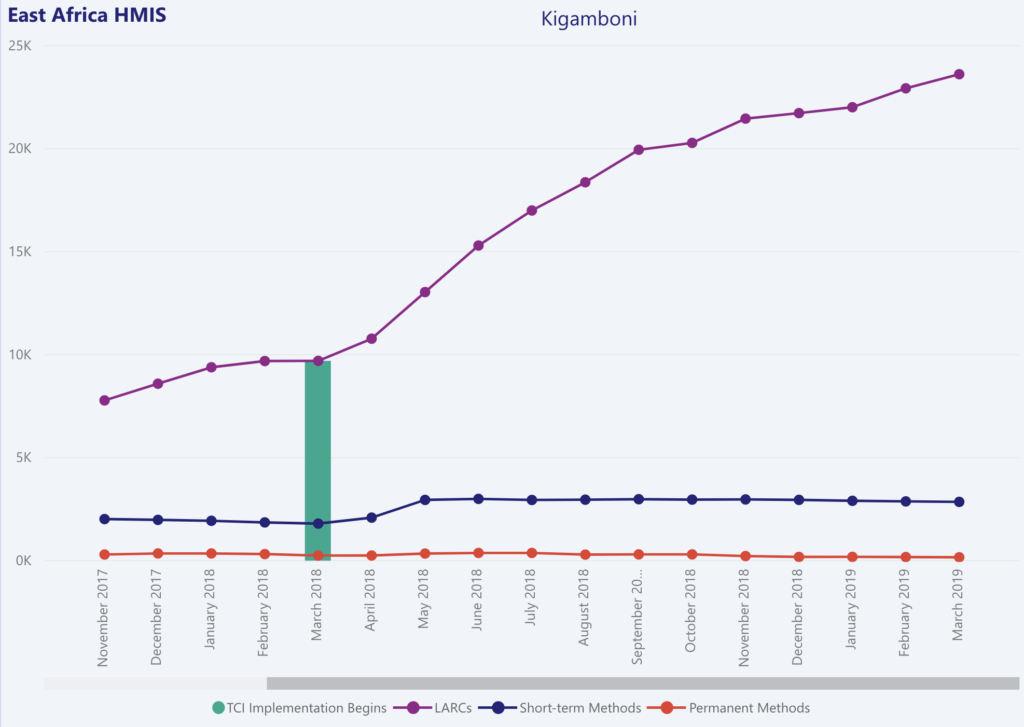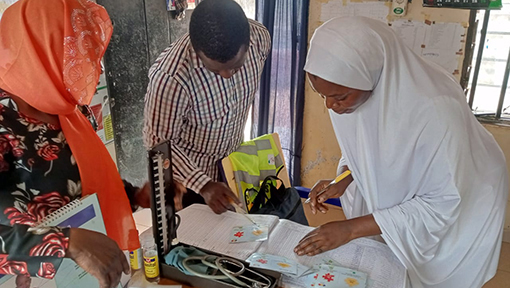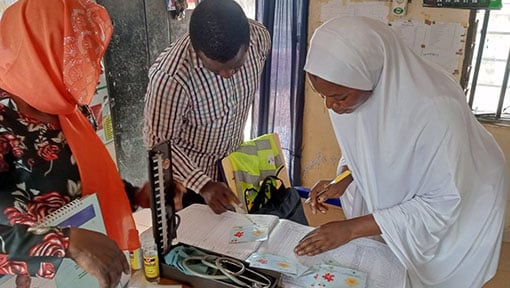Eight Committed Doctors Lead to LARC Acceptors Increasing 143% in Kigamboni, Tanzania
By Njeri Mbugua and Kathryn Walsh

To prevent this overestimation of short-term methods, the HMIS data has been adjusted using standard “couple-years of protection,” (CYP) which is the total estimated protection provided by contraceptives in a one-year period. To account for seasonal variations, the data represents a 12-month average for short-term methods and a 12-month rolling sum for long-term. Thus, an increase in the trend means that the latest month outperforms the same month from last year.
During a public broadcast in September 2018, Tanzanian President John Magufuli urged women there to reconsider birth control use and encouraged them to increase their family size. His statement made international news and threatened The Challenge Initiative’s success in Tanzania, particularly since a core principle of its platform is partnership with local governments to implement its reproductive health interventions. Despite the political environment at the national level, the Initiative, which is implemented locally as Tupange Pamoja, solidified strong relationships with health leaders and local governments throughout Tanzania. Because of its efforts, Initiative-supported health facilities across Tanzania saw a 39% increase in family planning uptake between March 2018 and March 2019. This includes a 50% increase in long-acting reversible contraceptives (LARCs).
But in the Kigamboni district of Dar es Salaam, the Initiative’s efforts were boosted by eight committed doctors, leading to a whopping 143% increase in LARC acceptors and a 60% increase in short-term acceptors between March 2018 and March 2019 (source: HMIS). The self-styled “Doctors for Family Planning” formed a task force to champion reproductive health access and act as the go-to experts for family planning in Kigamboni after being inspired by Initiative-supported whole-site orientations and onsite mentorship activities for LARC provision.
Led by the Kigamboni District Health Coordinator, Dr. Maria Madiya, the “Doctors for Family Planning” conduct integrated outreaches during market days, hold weekend inreaches to accommodate their clients’ schedules and facilitate family planning integration into other health services in Kigamboni.

Dr. Maria Madiya (standing), Kigamboni District Health Coordinator and one of the “Doctors for Family Planning.”
“We learnt that Tupange Pamoja is all about pooling resources to serve clients with quality services,” said Dr. Maria Madiya. “If all of us work together we will even be able to offer more methods and get to more men and women.”
Since the creation of the task force in early 2019, the doctors have provided services to more than 800 new family planning acceptors. And they are not keeping their knowledge to themselves.
“We use a mentorship approach and collaborate with national and regional health officials to provide trainees with supportive supervisory visits that improve their performance and help them get certified,” said Madiya. “This will ensure that a client is able to get a service when she or he needs it.”
A key strategy for the Initiative in Tanzania is to increase method choice for women, including access to and demand for LARCs. Compared to short-term methods which may require visits to a pharmacy every three months, an intrauterine device (IUD) can protect a woman from an unplanned pregnancy for upwards of 10 years. LARCs are also more cost-effective and have lower discontinuation rates than short-term methods.[1] Despite all the well-documented promises of LARCs, providers in Tanzania frequently lack understanding of their benefits and knowledge on how to insert them. Through its Sis-Kwa-Sisi strategy, the Initiative’s East Africa team is working to document its success in Kigamboni and transfer the lessons learned to other cities in Tanzania, as well as Kenya and Uganda.
[1] Unintended pregnancy in sub-Saharan Africa: magnitude of the problem and potential role of contraceptive implants to alleviate it. Hubacher D, Mavranezouli I, McGinn E. Contraception. 2008 Jul; 78(1):73-8.






